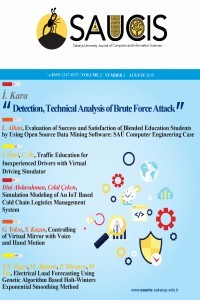
Sakarya University Journal of Computer and Information Sciences
Yazarlar: Devrim AKGÜN
Konular:Bilgisayar Bilimleri, Yapay Zeka
DOI:10.35377/saucis.03.03.725647
Anahtar Kelimeler:Deep neural network,VGG16,Pretrained networks,Fine tuning,Augmentation,Corrupted images
Özet: Deep learning networks has become an important tool for image classification applications. Distortions on images may cause the performance of a classifier to decrease significantly. In the present paper, a comparative investigation for binary classification performance of VGG16 network under corrupted inputs has been presented. For this purpose, images corrupted at various levels and fixed levels with Gaussian noise, Salt and Pepper noise and blur effect were used for testing. Convolutional layers of the VGG16 were frozen except the last three convolutional layers and a dense layer for binary classification was added. According to experimental results, as the effect of distortion is increased, performance of the deep learning classifier drops significantly. In the case of augmented training with distortion effects, the results were improved significantly.